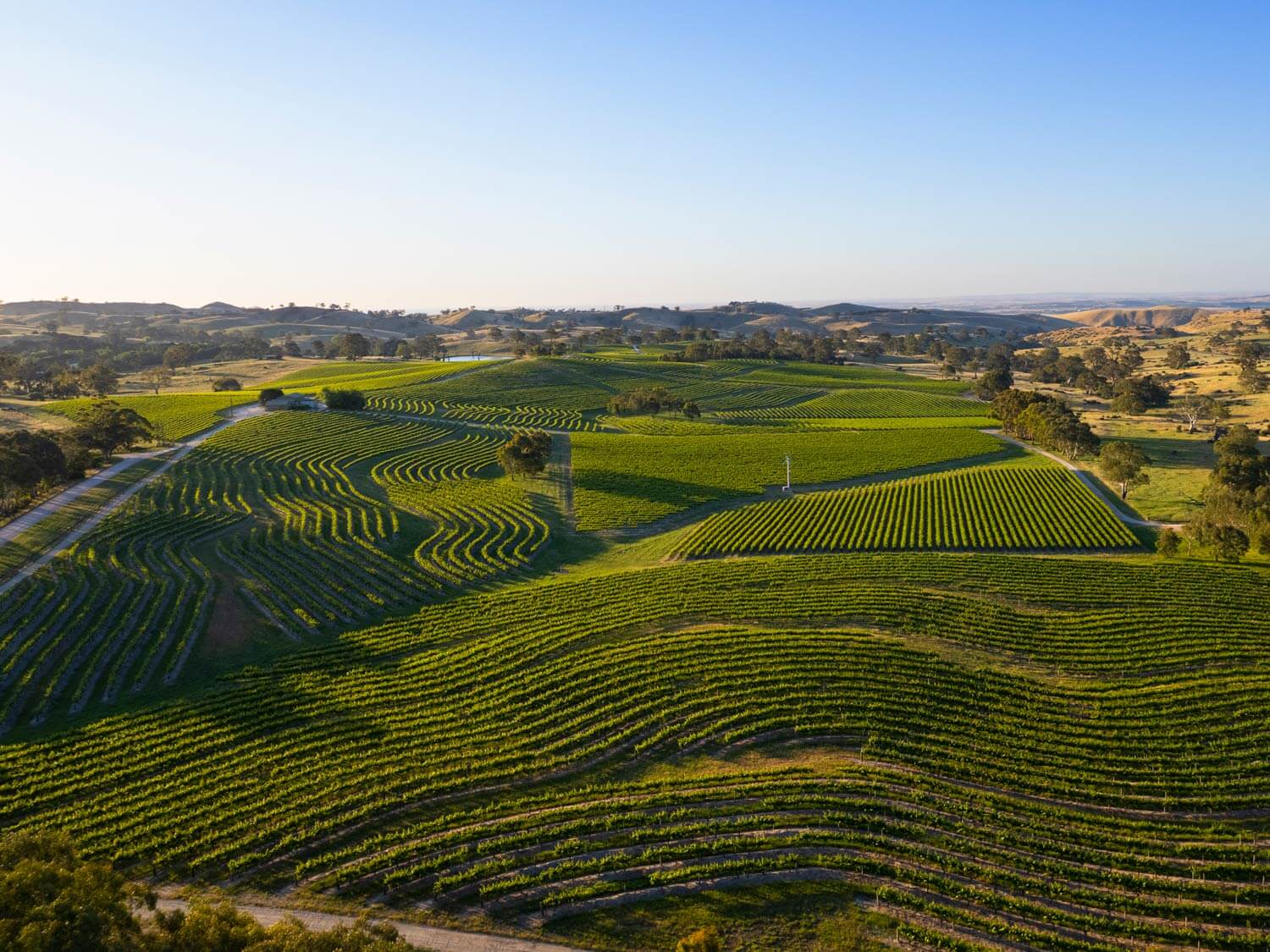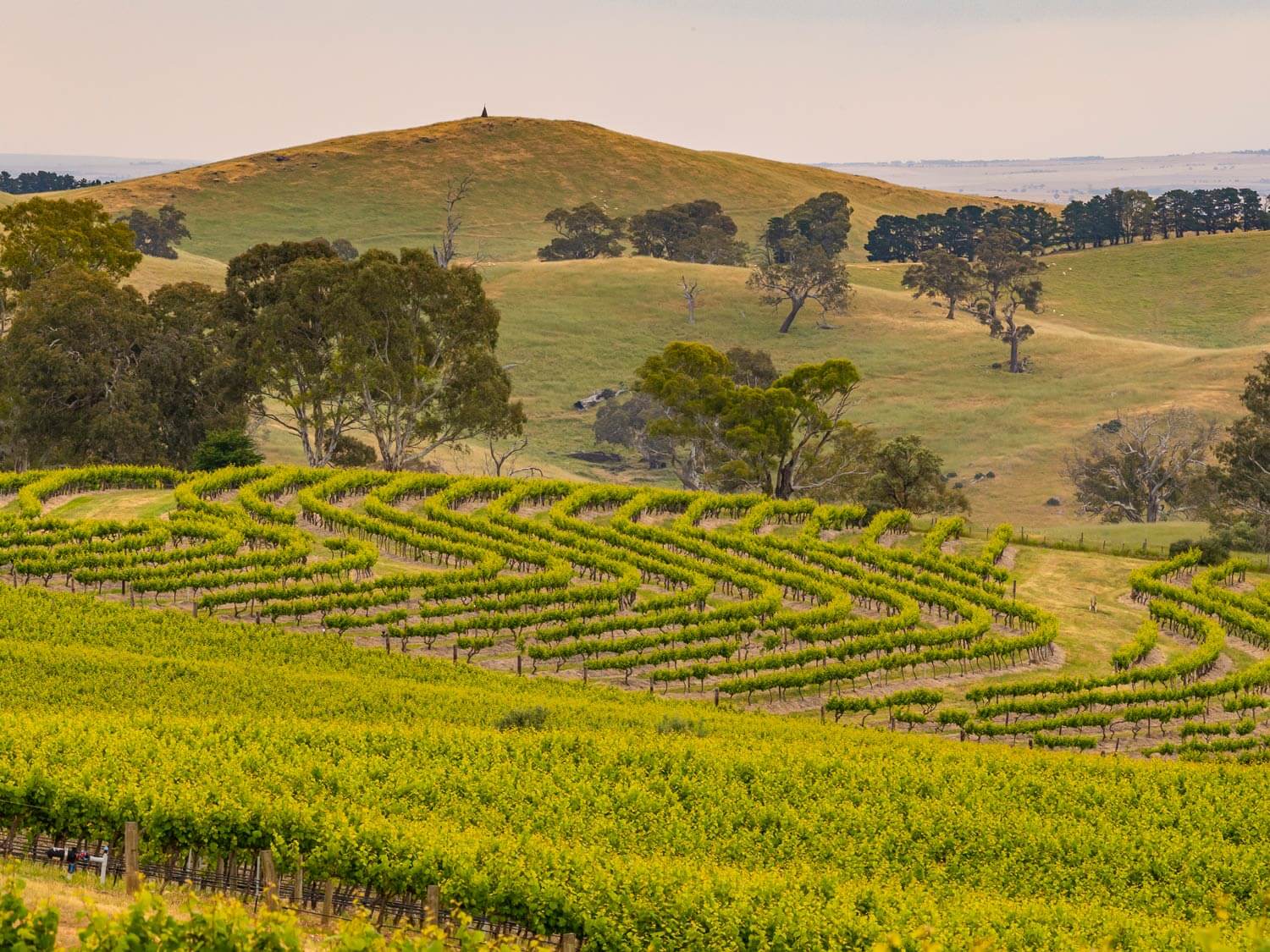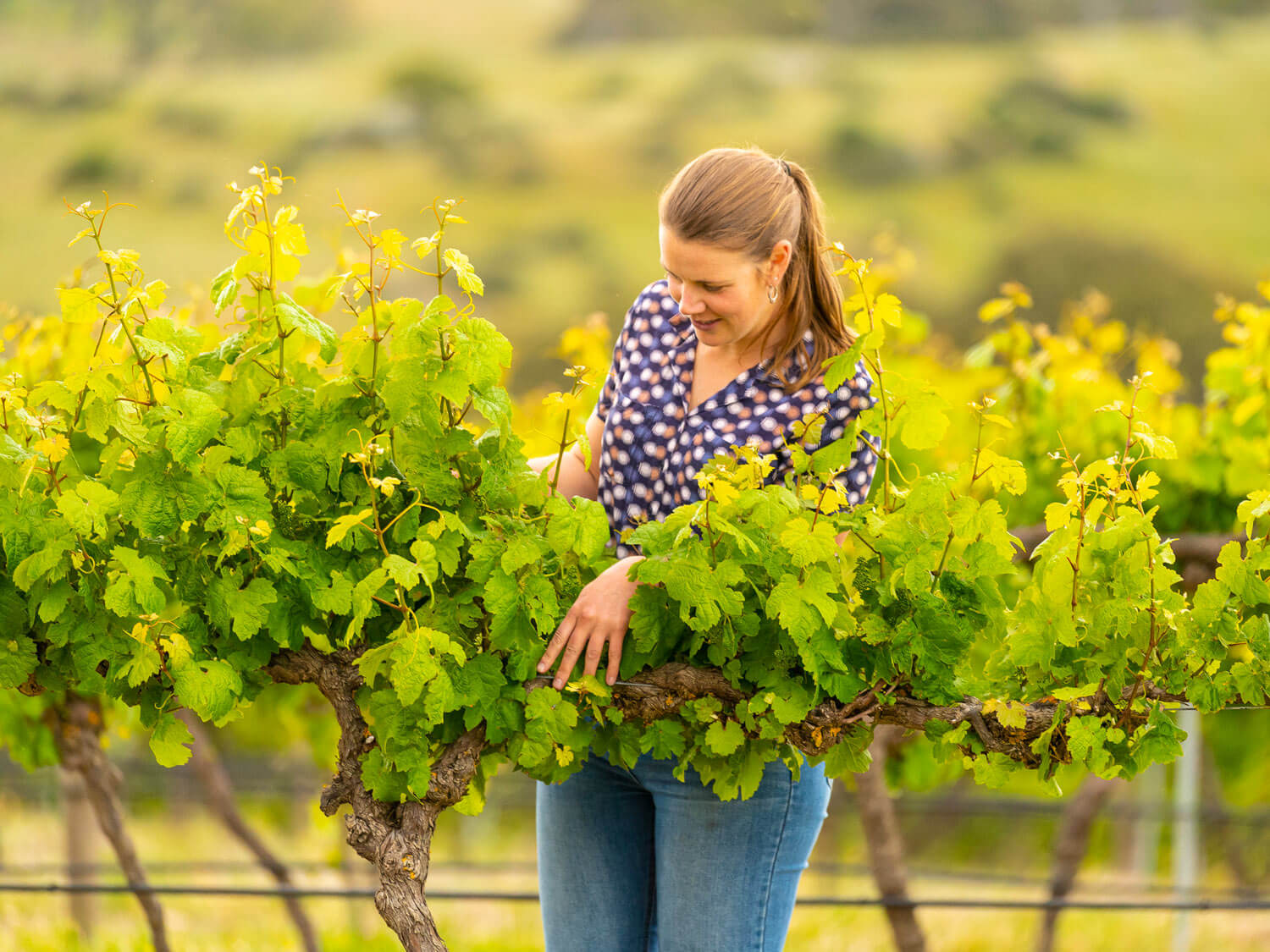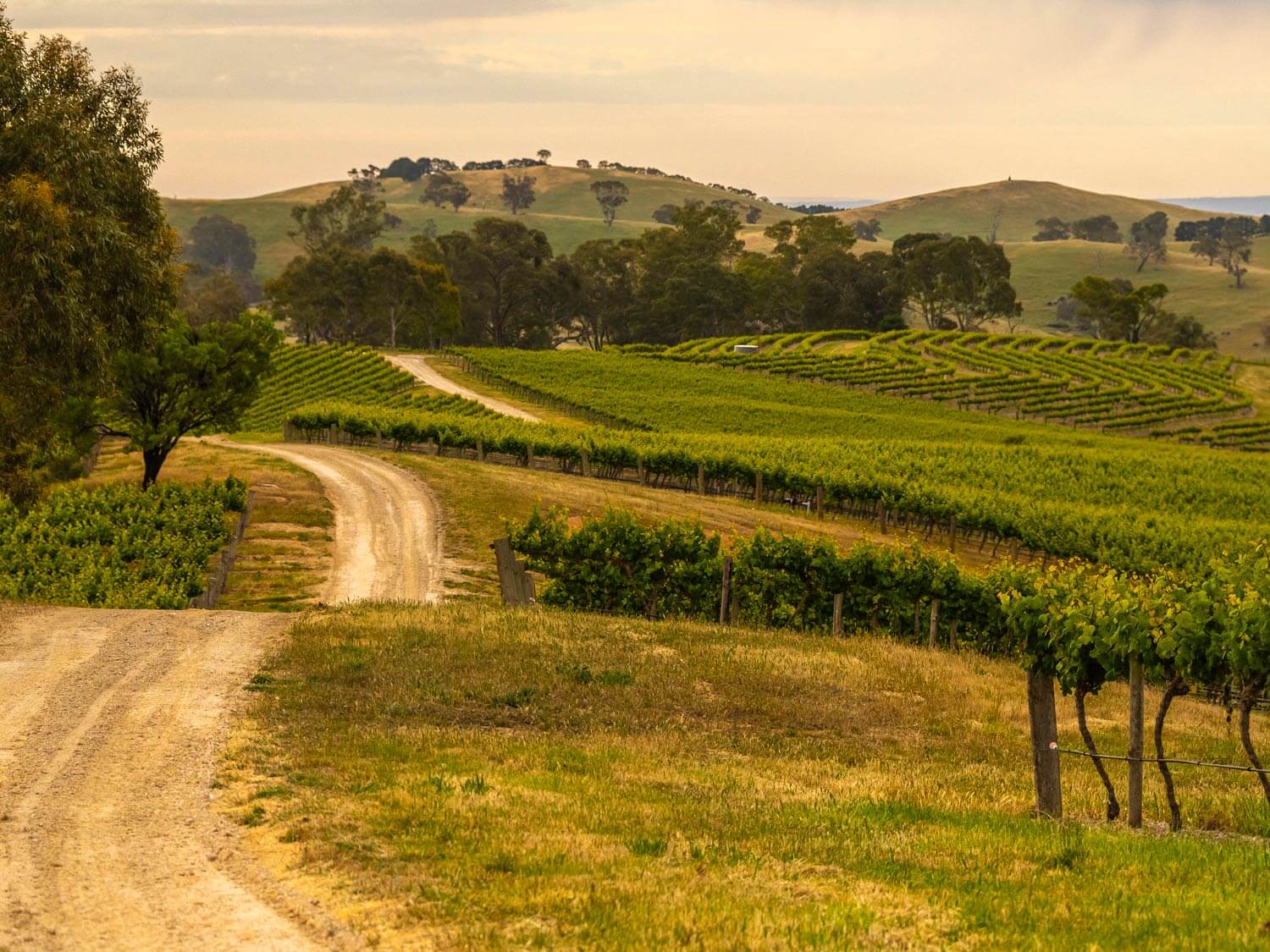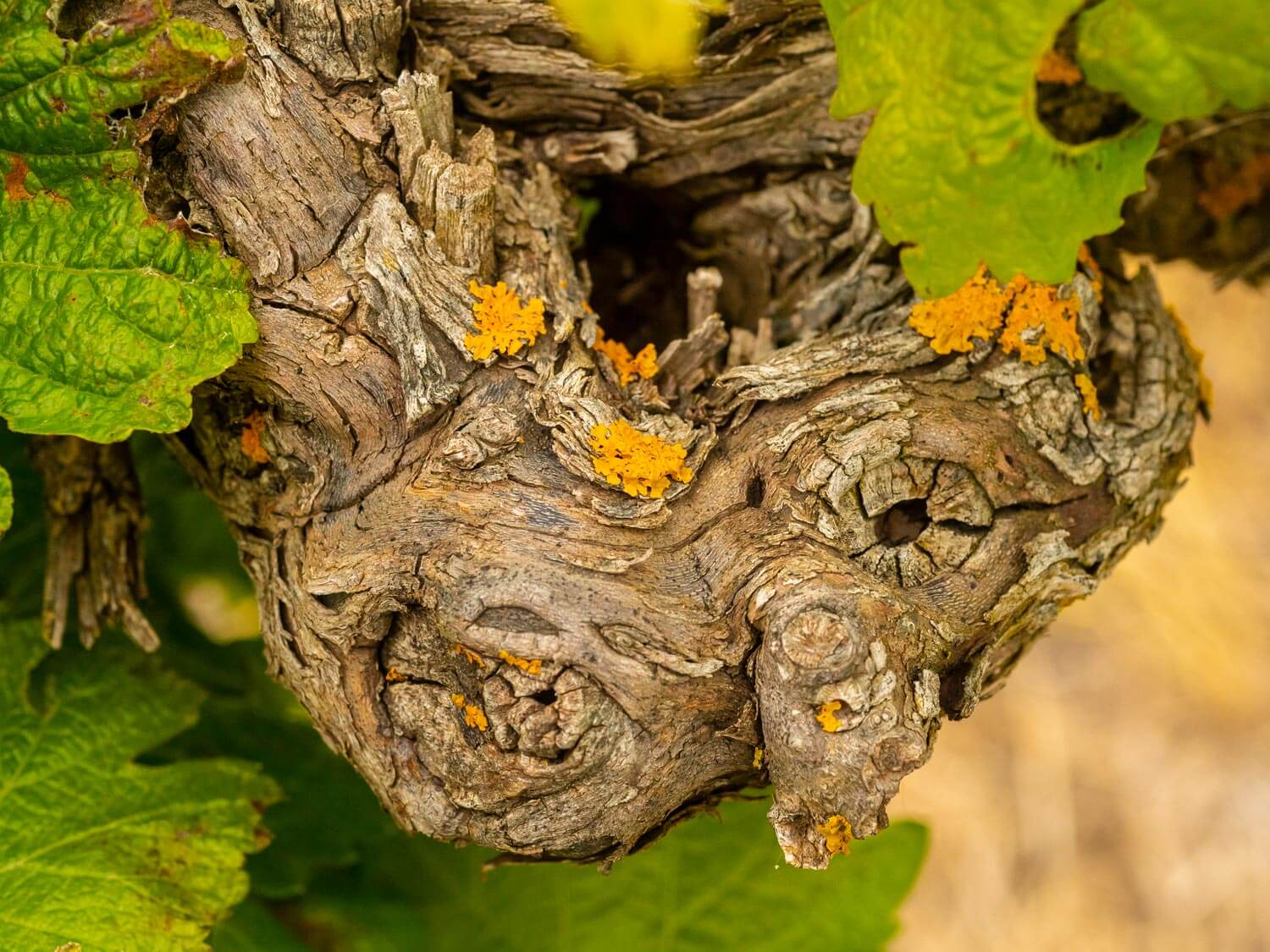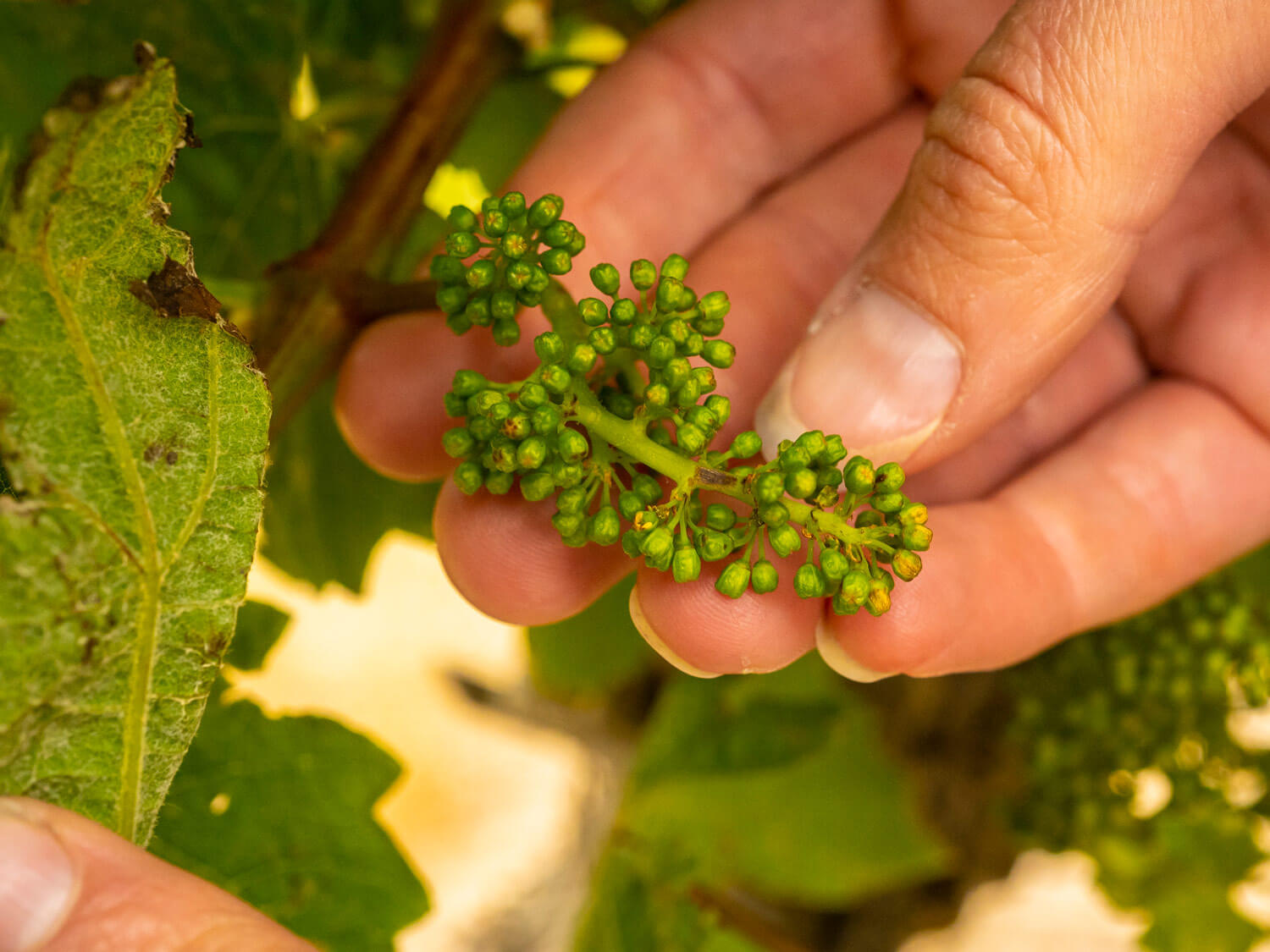Owned by Yalumba’s Hill-Smith family, the Pewsey Vale Vineyard is arguably Australia’s most famous riesling site. At meaningful elevation in the High Eden, its sweeping contour-planted vines are instantly recognisable from the iconic image that adorns the labels on the suite of wines, from the standard bearer to the aged release of ‘The Contours’ and a naturally fermented wine from the 1961 vines. Brooke Howell has been nurturing the vines at Pewsey Vale since 2010, with the old Contours Bock certified organic and the whole property managed with a sustainable mindset.
“Pewsey Vale Vineyard is a beautiful place, high in Eden Valley with its northerly aspect framing views of the Barossa Valley in the distance, and over 250 metres below,” says Howell. “There is a reason riesling was planted here 175 years ago. This is the same reason Pewsey is one of Australia’s iconic rieslings. The combination of climate, aspect, soil type and altitude of the vineyard, as well as careful, sustainable viticultural management, provide the perfect foundation to make outstanding riesling.”
“Pewsey Vale Vineyard is a beautiful place, high in Eden Valley with its northerly aspect framing views of the Barossa Valley in the distance, and over 250 metres below.”
Joseph Gilbert planted the first vines on the Pewsey Vale Vineyard in 1847, making them the first in the Eden Valley. Early 20th century economic decline saw the vineyard neglected, though enough vine material remained to propagate cuttings to replant riesling in 1961 when Wyndham Hill-Smith revived the site’s fortunes by planting vines that followed the contours of the hillsides, rather than neat linear rows.
Since those first plantings through the 1960s, that same vine material has been used over the decades to plant further to now occupy 64 hectares of the property. And while over the years other varieties were trialled, the site’s suitability to riesling has shone through, with the last small shiraz block grafted over in 2012.
Howell notes that their particular combination of soil, climate and elevation is a rare occurrence. “That is precisely the reason we will only ever grow riesling,” she says. “There is something timeless about the wines; the consistency from year to year, the soft acidity, the long palate and citrus flavours make it a delicious drink, whether with food or on its own, either young or with some bottle age.”
That suitability does not translate to it being an easy site to manage, though. Howell says that the 500-metre elevation, great variety of aspects, macroclimates, rocky outcrops and lean soils that contribute to flavour, wine character and quality also require a significantly nuanced approach. “Each individual block on the property needs to be managed slightly differently which challenges our thinking to continually improve and produce the best quality fruit we possibly can,” she says.
The Vineyard is accredited with Sustainable Winegrowing Australia as part of an ongoing quest to improve their practices, including only using steel posts to replace timber and poly ones, with any new trellising being recyclable. The irrigation is now run via pontoon, which saves electricity by following a more natural flow, rather than having to pump it over the dam bank. Insecticides are no longer used, and a combination of organic and biodynamic management techniques employed, with some low-input conventional treatments used when deemed necessary.
Howell employs satellite surveys to assess water and irrigation needs across the greatly varied vineyard, with the soil regularly tested for nutrition levels and microbial activity. A permanent sward of fescue and clover cover crops is grown in the rows, while straw is spread under vine to reduce water loss through evaporation.
Howell notes that biodiversity is a very important part of their approach. “This has been encouraged throughout the vineyard, which is home to animals, birds, reptiles, insects, spiders and microorganisms including yeast and bacteria. The Hill-Smith family has invested considerably into planting of native vegetation in areas that are not suitable for vineyard and focused on preserving natural habitat for fauna. …The natural waterways on the property have been protected as much as possible.”
That land of either remnant or revitalised vegetation amounts to 22 hectares. “There are additional areas within the vineyard that are dedicated as insectariums, where specific native plants attract beneficial insects that target unwanted pests,” adds Howell.
“With strong biodiversity there is better natural balance in the vineyard, requiring less intervention in growing the grapes and making the wine. We have always had a philosophy of ensuring the vineyard complements the natural landscape. Pewsey Vale Vineyard is a picturesque place to work, with the surrounding natural landscape, abundance of wildlife and varying hills and valleys.”

